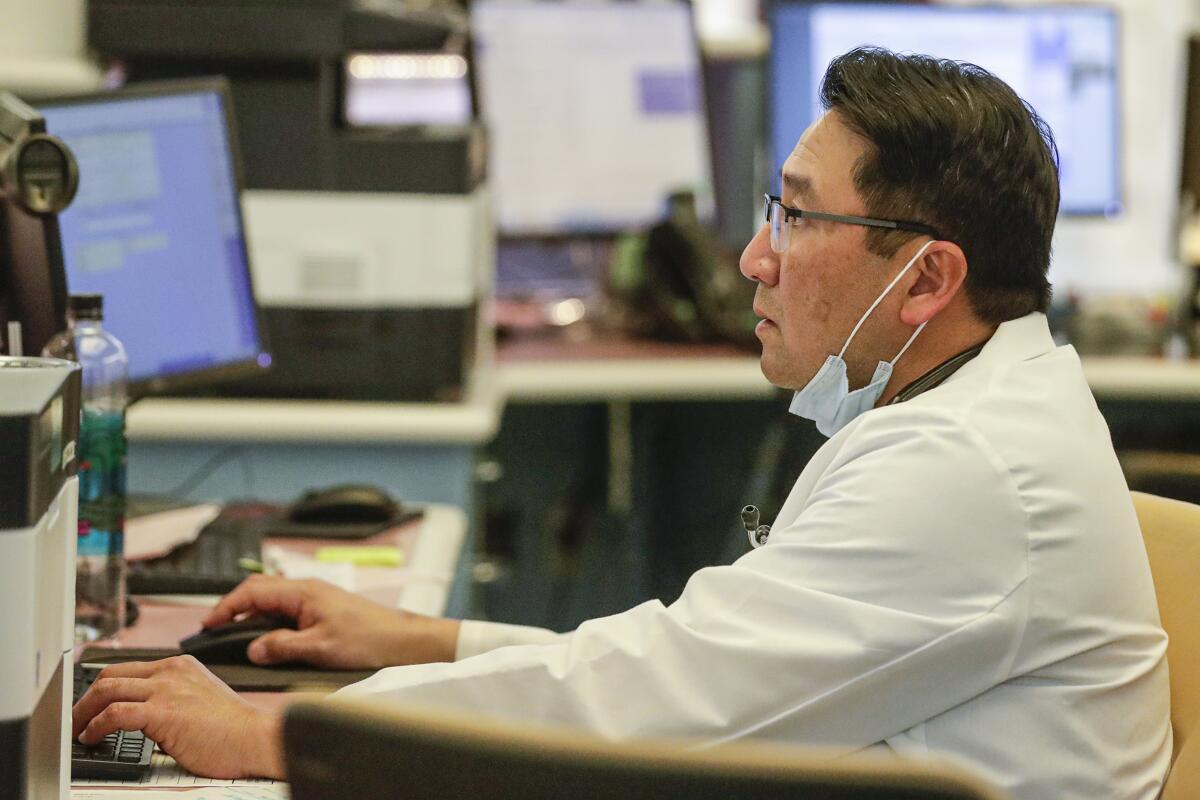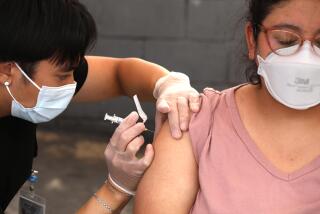How to care for someone with COVID-19

Has someone in your home tested positive for the coronavirus or started showing symptoms? Here’s how to care for your loved one and keep yourself safe.
First, remember that most people who get sick with COVID-19 will have mild symptoms. Experts say those people should stay home and leave only for medical care.
The Centers for Disease Control and Prevention recommends five steps for caring for a person with COVID-19: monitor the person for worsening symptoms, prevent the spread of germs, treat their symptoms and, finally, decide when to end home isolation.
Monitor symptoms
If the person’s symptoms worsen, call their healthcare provider. Signs that someone may require immediate medical attention include pain or pressure in the chest, shortness of breath (“I can’t seem to get enough air”), confusion or turning blue.
Prevent the spread of the virus
Say your spouse or roommate is showing symptoms or has tested positive for COVID-19. First, isolate that person. If you can, put that person in a separate bedroom with a separate bathroom. Make sure the room has access to good airflow.
“The idea here is they’re not just walking around everyplace,” said Robert Kim-Farley, a UCLA professor of epidemiology and community health sciences.
If that’s not possible, try to limit that person’s movements around your home. If there’s a shared bathroom, give it a quick wipe with antibacterial cleaner after the person’s use.
Try to avoid sharing items such as towels, bedding and dishes with the infected person. (And after that person uses them, wash the items.)
Be extra vigilant about cleaning common surfaces at home, including counters, tabletops and doorknobs.
When doing laundry, use the warmest setting possible and use gloves if you’re dealing with soiled clothes or bedding. Don’t shake the laundry before placing it in the machine, Farley-Kim said. That could disperse the virus.
If you can find masks, have the infected person wear one when others are in the room. If you can’t find a mask, “a bandanna is better than nothing,” Kim-Farley said.
Also, make sure that person avoids contact with pets. Until more is known about the novel coronavirus, the CDC advises limiting contact.
If you’re already practicing social distancing, this is a no-brainer: Avoid unnecessary visitors.
Treat symptoms
It’s like your mother said: Drink lots of fluids to stay hydrated. Get rest. Over-the-counter medications such as Tylenol can help with fever.
Decide when to end isolation
The CDC recommends waiting until the person’s fever has subsided for 72 hours (three full days of no fever without the use of fever-reducing medication), other symptoms such as shortness of breath have improved, and at least seven days have passed since their symptoms first appeared. So if your fever was over on Wednesday, but your symptoms first appeared on Sunday, you would wait seven days from Sunday rather than 72 hours from Wednesday.
Kim-Farley said COVID-19 will be a mild illness for about 80% of people. Isolation can be tough, so make sure to combat potential loneliness.
“We really should be reaching out to friends and family to create social bonding,” he said.
Coronavirus Basics
More to Read
Sign up for Essential California
The most important California stories and recommendations in your inbox every morning.
You may occasionally receive promotional content from the Los Angeles Times.











